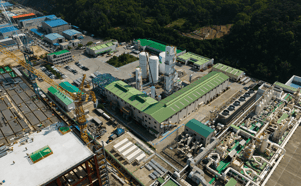Cryogenic Air Separation just gets Bigger
The essential raw materials for the industrial gas industry are present all around us in air. The challenge for all industrial gas companies is to find effective and economical ways to separate and deliver them. In theory, gas separation is just a simple molecular sorting operation, but the devil is in the detail and the various separation process have different cost implications. Nina Morgan discusses developments in cryogenic air separation.
The basic principle of separating air into its component molecules has been well understood for over 200 years and commercial separation has been undertaken for over 100 years.
Air is made up of a mixture of gases, each composed of molecules of a specific size and with specific properties. In theory, all you need to do to obtain pure forms of the gases you want is to separate the different molecules out on the basis of their size and behaviour. In practice this can be done either at room temperature – using methods such as pressure swing adsorption (PSA), vacuum swing adsorption (VSA) or membranes – or cryogenically.
Choosing the appropriate method to produce gases depends on many factors such as the types, amounts and purities of gases needed. In general, cryogenic air separation units (ASUs) are the best choice for supplying large amounts of high purity oxygen or nitrogen. Less abundant gases such as argon, xenon, krypton and neon are now typically produced by means of a secondary distillation processes. Argon makes up around 1% of the air we breathe. Xenon, krypton and neon, along with helium, make up less than 0.1%.
... to continue reading you must be subscribed









